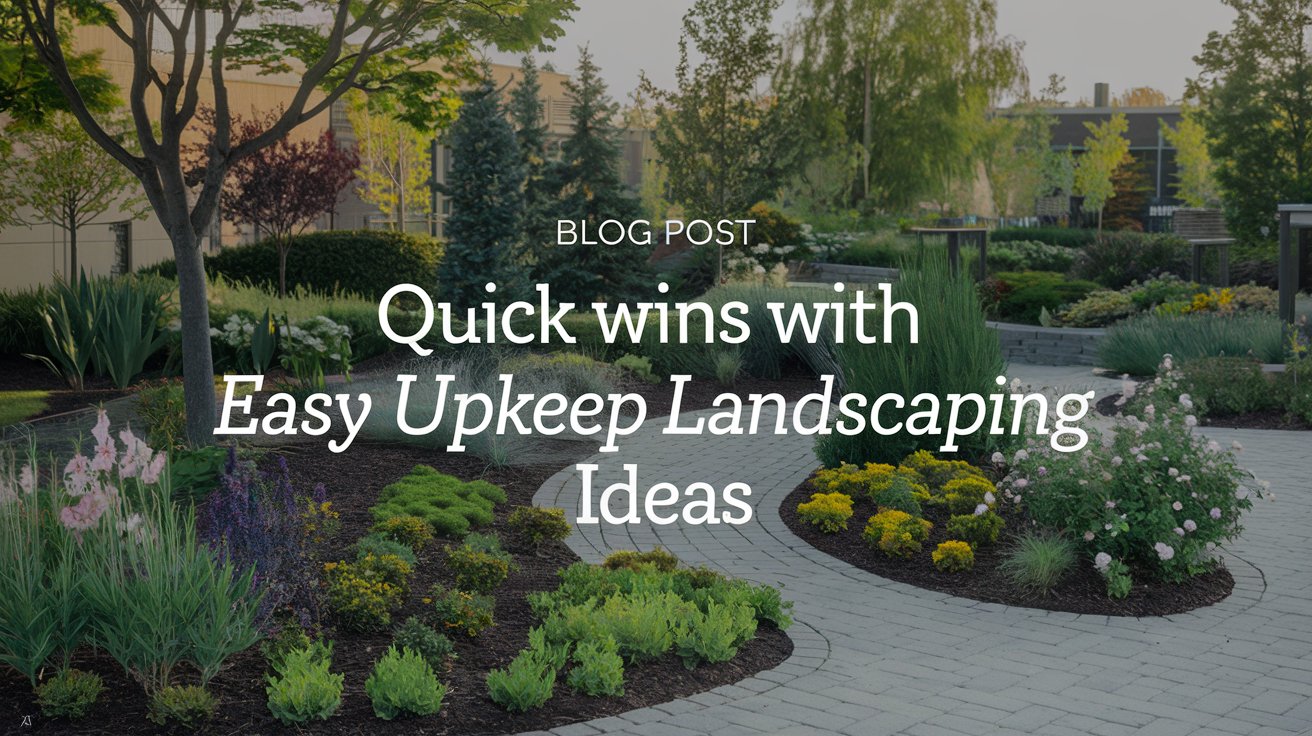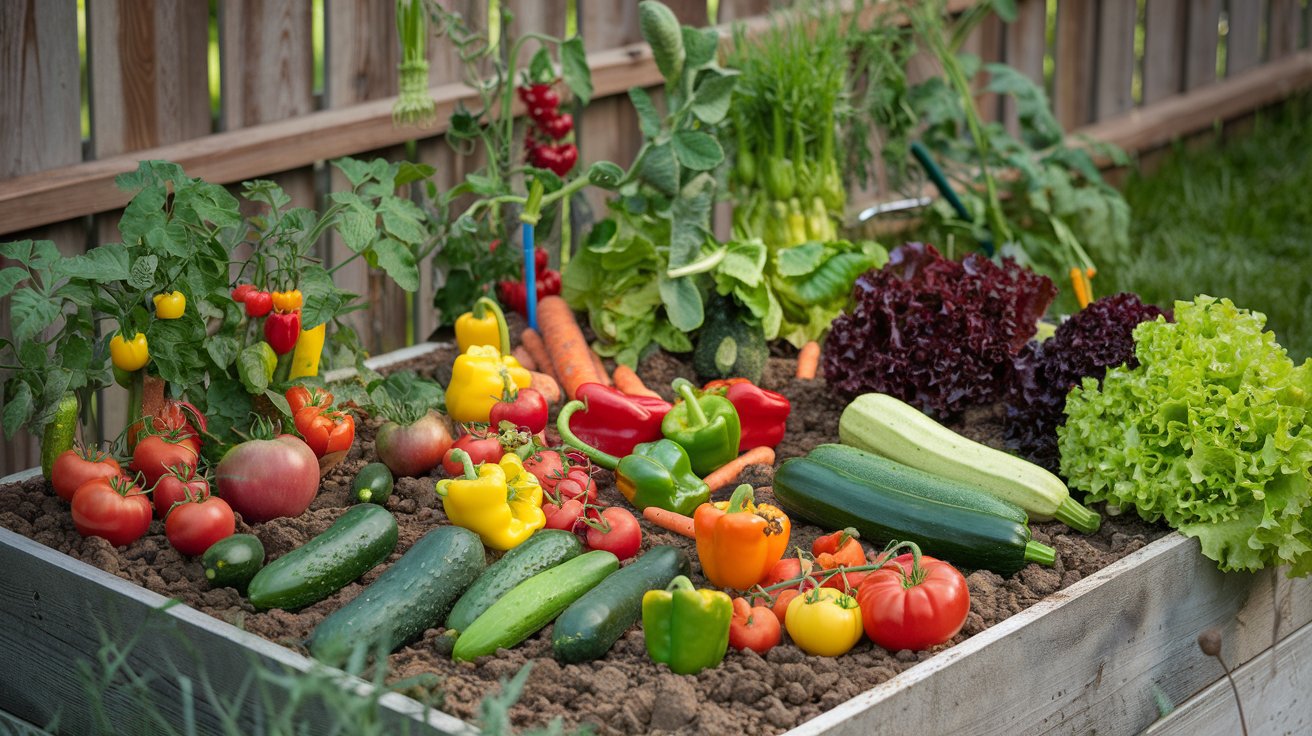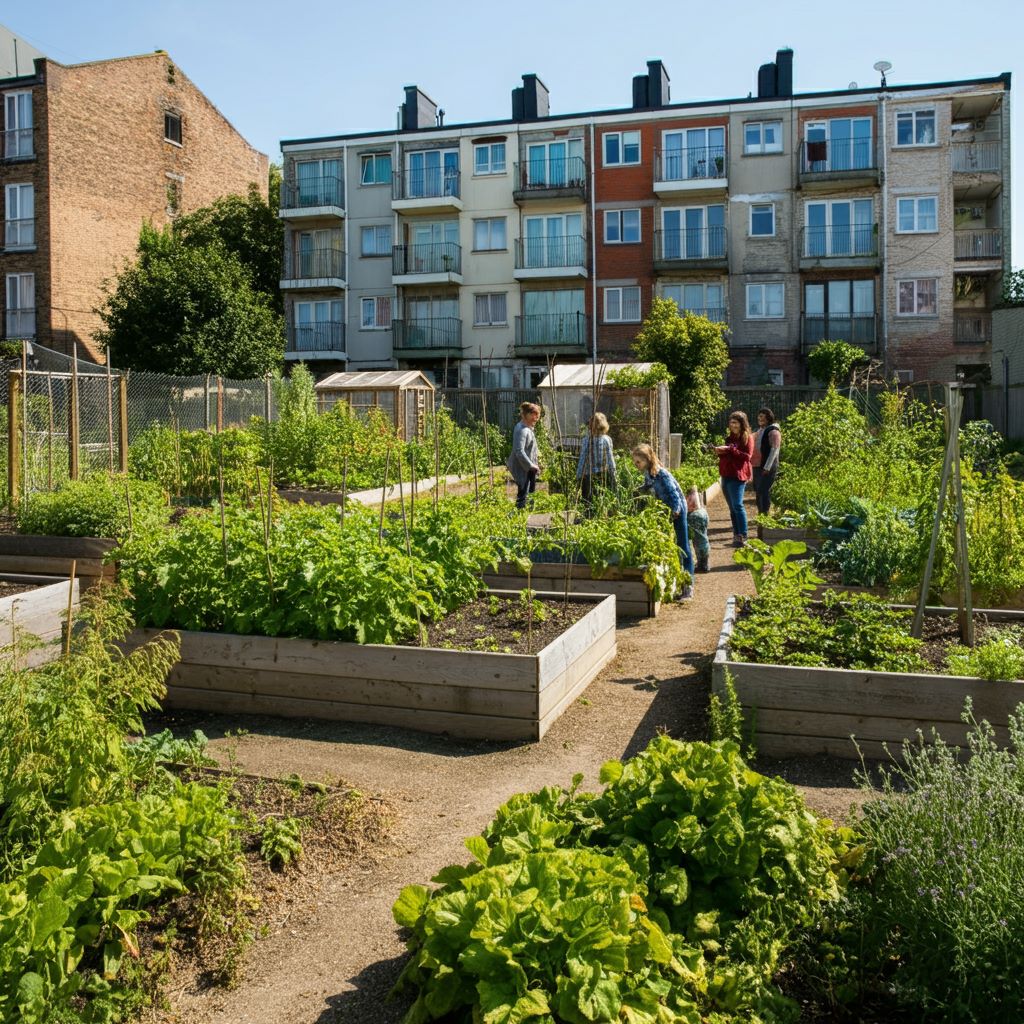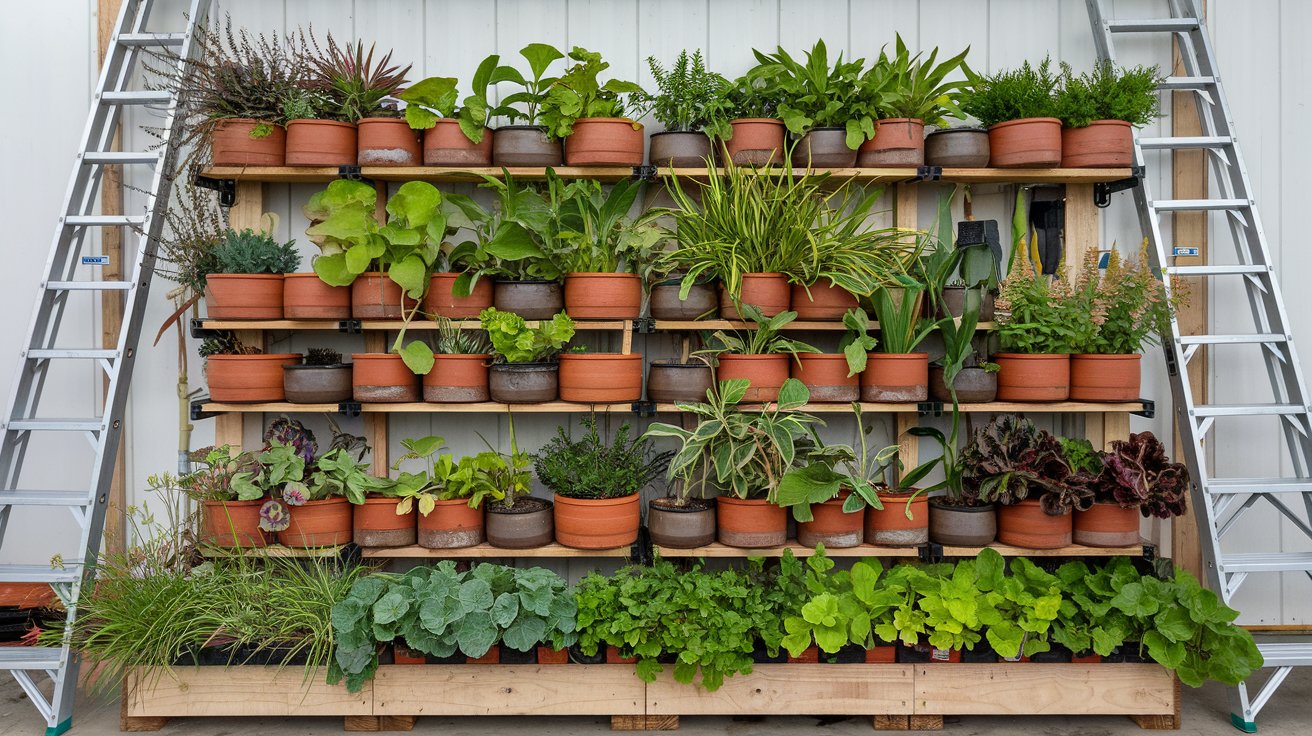Creating a beautiful outdoor space doesn’t have to mean endless weekends filled with pruning, mowing, or watering. With a few smart strategies, you can achieve a stunning, low-maintenance landscape that saves time, energy, and money. These easy upkeep landscaping ideas are tailored for homeowners who crave simplicity and value results.
Busy lifestyles demand smarter solutions—and landscaping is no exception. Whether you’re working full-time, managing a family, or simply want to enjoy your weekends again, low-maintenance landscaping is the ticket to outdoor bliss with minimal upkeep. Let’s dig into how you can design a vibrant, functional, and stress-free yard using techniques grounded in experience, expert recommendations, and practical success stories.
Table of Contents
Why Low-Maintenance Landscaping Is a Game-Changer for Busy Homeowners
Maintaining a picture-perfect yard can feel like a second job. But landscaping doesn’t have to drain your energy or your wallet. Today’s easy upkeep solutions focus on sustainability, time-saving elements, and long-lasting visual appeal.
Take Amy, a homeowner in Austin, Texas. After struggling for years to keep her patchy lawn green, she embraced drought-tolerant landscaping using crushed granite paths, local limestone borders, and native Texas plants. Her water bill dropped by 50%, and she hasn’t touched a lawn mower in over two years. This real-world example proves how effective low-maintenance landscaping can be—not just in theory, but in practice.
Time and again, the biggest wins come from:
These changes do more than beautify—they give homeowners back their time and peace of mind. Landscapes designed with low effort in mind are also more sustainable, eco-friendly, and cost-effective in the long run.
The Foundation of No-Fuss Landscaping: Layering for Simplicity and Function
The secret to low-effort landscapes isn’t just about plant choices—it’s about structure. Creating a landscape in layers not only adds visual interest but also reduces the amount of time needed for maintenance. These foundational layers include mulch, ground cover, defined borders, and carefully selected plant zones.
Let’s start with mulch. Organic mulch—like bark chips or pine straw—does double duty: it locks in soil moisture and prevents weed growth. Mulching around trees, shrubs, and flower beds also gives your landscape a clean, finished look without much effort. Meanwhile, inorganic mulch like gravel or rubber mulch provides long-term coverage with virtually no upkeep.
Ground covers come next. Instead of managing sprawling lawns, homeowners can plant creeping thyme, mondo grass, or sedum in beds and under trees. These plants thrive on their own, reduce weed growth, and eliminate the need for mowing.
Bordering and edging define the boundaries of your yard. Whether you use metal edging, natural stone, or composite materials, clean lines help control plant spread and simplify mowing or trimming. It’s a subtle design move with a powerful maintenance impact.
Together, these elements form a low-maintenance foundation that allows other features—like perennial flowers or native shrubs—to thrive without the fuss.

Smart and Stylish: Drought-Tolerant Landscaping That Works in Any Climate
For homeowners in dry or drought-prone areas, water-saving landscaping isn’t just wise—it’s necessary. But drought-tolerant doesn’t mean drab. With the right plants and materials, your landscape can thrive with little to no irrigation while still being stylish and colorful.
One standout approach is xeriscaping, a landscaping technique that uses minimal water through efficient plant choices, strategic layout, and non-plant elements like gravel or stone. The beauty of xeriscaping lies in its adaptability; it works equally well in a desert climate or a temperate zone, as long as the plants are suited to the local environment.
Consider these regional drought-tolerant plants:
Plant | Best Regions | Key Features |
Agave | Southwest, California | Sculptural, no watering needed |
Yarrow | Nationwide | Butterfly-friendly, hardy |
Russian Sage | Central to Western U.S. | Aromatic, long blooming |
Lavender | Coastal, West | Fragrant, repels pests |
Sedum (Stonecrop) | Cold and warm zones | Colorful, thrives in poor soil |
Pairing plants with crushed granite, river rocks, or pavers makes for a water-wise garden that’s visually stunning. Even small changes—like replacing a strip of lawn with drought-tolerant ground cover—can significantly reduce maintenance needs.
DIY Wins: Weekend Landscaping Projects That Pay Off for Years
Homeowners looking for immediate impact without a full renovation can get big results from weekend DIY projects. These quick wins improve function, reduce maintenance, and enhance curb appeal—all in just a day or two.
One of the easiest ways to make a difference is by installing gravel pathways. Mark the desired area with edging material, lay down landscape fabric to prevent weeds, then cover it with crushed gravel. It’s a cost-effective, low-upkeep alternative to grass or stepping stones.
Another project is creating defined planting beds with edging. Flexible metal or composite edging provides neat lines between grass and flower beds. Once installed, it keeps mulch in place and prevents lawn creep—one of the leading causes of unkempt yards.
Homeowner Steve from Colorado completed a DIY mulch bed around his patio in a single weekend. With just $200, he replaced overgrown turf with mulch and a few low-maintenance perennials. A year later, the area looks just as fresh—and he hasn’t needed to do more than light weeding.
These bite-sized landscaping wins are perfect for anyone looking to make a noticeable impact without hiring a crew.

Budget-Friendly Landscaping: Stretching Your Dollar Without Sacrificing Style
Cost is often a concern when landscaping, but low-maintenance doesn’t have to mean high-cost. By choosing the right materials and strategies, you can get professional-looking results without draining your wallet.
Let’s look at a side-by-side comparison:
Landscaping Element | DIY Cost Range | Maintenance Level |
Mulch Bed (100 sq. ft.) | $50–$150 | Low |
Gravel Path (20 ft.) | $100–$300 | Low |
Artificial Turf Patch | $250–$600 | None |
Native Plant Garden (10–15 plants) | $100–$200 | Very Low |
Use recycled materials where possible—like reclaimed bricks for edging or pallets for raised beds. Many cities offer free mulch and compost through public programs. Plant swaps or local Facebook groups are great ways to source perennials without spending a dime.
Even lighting can be budget-friendly. Solar garden lights installed along gravel paths or borders can create ambiance and safety for less than $50.
These budget-conscious choices offer not just savings but durability and ease of care for years to come.
Plant Smarter, Not Harder: Perennials, Shrubs, and Ground Covers That Thrive with Neglect
One of the simplest ways to reduce garden maintenance is by selecting plants that do most of the work for you. This means choosing perennials, low-prune shrubs, and ground covers that come back year after year and require little intervention.
Why Perennials Win Long-Term
Perennials are the unsung heroes of low-maintenance gardens. Unlike annuals, which need to be replanted each year, perennials return season after season. They also tend to be hardier, better adapted to local conditions, and less reliant on constant fertilization.
Plants like Echinacea, Black-eyed Susans, and Hostas can thrive with minimal care. They not only provide vibrant color but also support pollinators like bees and butterflies, making them both beautiful and ecologically responsible.
Low-Maintenance Shrubs to Consider
Shrubs can be the backbone of your landscape. Varieties such as Boxwood, Spirea, and Juniper maintain their shape naturally and only need occasional trimming. They also provide year-round structure, meaning your yard looks put together even in the off-season.
Ground Covers That Beat the Weed Battle
A dense ground cover acts as living mulch, helping to suppress weeds, retain soil moisture, and reduce erosion. Excellent choices include Creeping Jenny, Sedum, and Mondo Grass. These plants thrive in full sun or partial shade and spread to form thick carpets that crowd out weeds with ease.
A homeowner in Pennsylvania replaced a patchy lawn with a mix of creeping thyme and sedum. Two years later, he enjoys a lush, flowering ground cover that needs no mowing and smells incredible after a summer rain.
Artificial Turf and Rock Gardens: Effortless Beauty, Year-Round
Artificial turf has come a long way from the neon-green plastic of the past. Today’s options are lush, realistic, and engineered for drainage and comfort. For homeowners tired of mowing, fertilizing, and watering, turf offers an instant green space that looks fresh no matter the season.
The Benefits of Going Synthetic
Artificial turf is ideal for small yards, play areas, and shaded spots where grass struggles to grow. It requires no irrigation, won’t develop bald patches, and stays neatly trimmed—saving time, water, and hassle. The upfront cost can be steep, but the long-term savings on water and lawn services often offset the investment within a few years.
Rock Gardens: Art Meets Simplicity
A rock garden is another excellent low-effort choice. These landscapes combine various sizes of stones, drought-tolerant plants, and gravel to create textural interest with minimal upkeep. A well-designed rock garden eliminates the need for mowing, reduces pests, and provides year-round structure.
A homeowner in Utah replaced a 700 sq. ft. lawn with artificial turf bordered by a rock garden featuring ornamental grasses and succulents. The result? A sleek, modern yard that cut monthly maintenance time by 90% and costs by nearly $1,000 per year.
Together, artificial turf and rock gardens offer “set it and forget it” options for homeowners seeking maximum impact with minimal commitment.

Easy-to-Follow Designs That Bring It All Together
Designing a low-maintenance yard can feel overwhelming without a roadmap. To make it easier, we’ve put together a few sample layouts that blend the principles discussed in this article—layering, smart planting, and low-effort materials—into cohesive plans.
Sample Layout 1: Backyard Relaxation Zone
Sample Layout 2: Curb Appeal Front Yard
Sample Layout 3: Side Yard Makeover
These ready-to-implement ideas simplify planning while maximizing results. They’re proof that you don’t need to be a landscape designer to create a functional and stunning outdoor space.
Case Studies in Low-Maintenance Success
Learning from others’ success stories can be incredibly motivating. Below are three short case studies showcasing how real homeowners achieved beautiful, low-maintenance yards using the principles outlined in this guide.
The Lawn-Free Family Yard
Location: Phoenix, AZ
Goal: Reduce water usage and maintenance
Solution: Replaced front lawn with gravel, native succulents, and artificial turf patch for kids
Result: Saved $1,500/year and reduced maintenance to once a month
Busy Professional’s Urban Escape
Location: Denver, CO
Goal: Create a peaceful retreat without yardwork
Solution: Installed mulch beds with low-prune shrubs and added solar lighting
Result: Yard looks tidy year-round with minimal upkeep
Retiree’s No-Fuss Garden
Location: Portland, OR
Goal: Eliminate mowing and weeding
Solution: Covered lawn with landscape fabric, added rock garden and perennials
Result: Cut yard time from 6 hours/week to less than 1
These examples demonstrate that with the right planning, easy upkeep landscaping ideas are achievable at any budget or lifestyle.
Final Touches That Make a Big Difference
Sometimes, it’s the little things that elevate a low-maintenance yard from practical to truly special. Adding final touches like outdoor lighting, automatic irrigation, or decorative garden art gives your yard personality without adding complexity.
Lighting for Ambiance and Safety
Solar-powered LED lights can be easily staked along paths or garden beds. They’re inexpensive, require no wiring, and add beauty and safety to your landscape.
Irrigation for Worry-Free Watering
Installing a drip irrigation system ensures your plants receive targeted watering with minimal waste. These systems can be set on timers, giving you complete control with zero daily effort.
Garden Art and Features
Incorporate a few weatherproof sculptures, ceramic pots, or even a bird bath to provide focal points that enhance the overall vibe of your space without extra maintenance.
These features complete your easy upkeep garden and make your outdoor time more enjoyable—because a beautiful yard should be something you enjoy, not maintain.
Conclusion: Say Goodbye to Yard Stress—Start Your Low-Maintenance Journey Today
Landscaping doesn’t need to be a burden. With thoughtful planning, smart plant choices, and simple upgrades, anyone can create a stunning outdoor space that requires little effort to maintain. From artificial turf and gravel paths to perennial beds and native plants, these strategies work together to create a space that gives back more than it takes.
Whether you’re looking to reclaim your weekends, reduce your water bill, or simply enjoy your garden more, now’s the time to take action. Start small or go all-in—the choice is yours.
Frequently Asked Questions
What are some top low maintenance landscaping ideas?
Great options include mulch beds, native plants, gravel paths, and replacing grass with artificial turf.
How can I achieve simple backyard landscaping without spending too much?
Use recycled materials, start with mulch and perennials, and focus on weekend DIY projects.
What are easy garden maintenance tips for beginners?
Stick to native plants, use landscape fabric, and install drip irrigation for less daily work.
Is drought-tolerant landscaping a good idea outside the desert?
Yes, it saves water and works well in almost any region with the right plant selection.
Can I do DIY low maintenance landscaping on my own?
Definitely! Start with simple tasks like laying mulch, installing edging, or planting ground cover.
Which shrubs require the least pruning?
Boxwood, juniper, spirea, and dwarf holly are all low-maintenance shrub options.

Robert Martin is a passionate blogger and versatile content creator exploring the intersections of personal finance, technology, lifestyle, and culture. With a strong background in financial literacy and entrepreneurship, he helps readers make smarter money moves, build sustainable side hustles, and achieve financial independence.
Beyond finance, Robert shares his insights on home decor and gardening—offering practical ideas for creating beautiful, functional living spaces that inspire comfort and creativity. He also dives into the dynamic worlds of sports and celebrity news, blending entertainment with thoughtful commentary on trends that shape today’s pop culture.
From decoding the latest fintech innovations to spotlighting everyday success stories, Robert delivers content that’s informative, relatable, and actionable. His mission is to empower readers to live well-rounded, financially confident lives while staying inspired, informed, and ahead of the curve.




